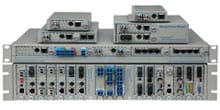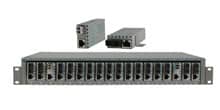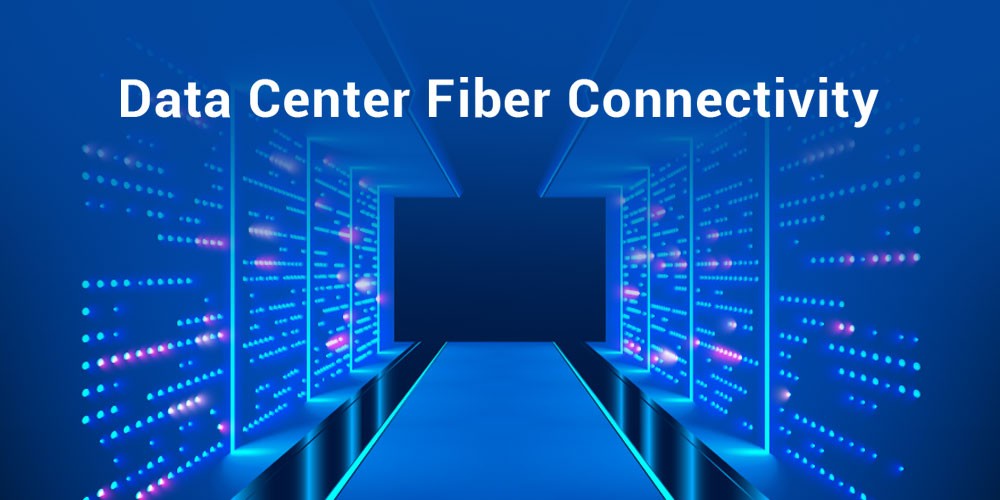- Products
- PoE Media Converters and Switches
- Ethernet & PoE Switches Product Selector
- Multi-Gigabit Ethernet and PoE Switches
- PoE PSE Commercial Switches
- PoE PSE Industrial Fiber Switches
- PoE Industrial Copper Extenders
- PoE Powered Media Converters
- PoE PSE Media Converters
- PoE Extenders & Injectors Product Selector
- Pluggable Transceivers Product Selector
- Product Lines

- iConverter Managed Multi-service Platform
- Copper to Fiber Media Converters
- Ethernet Media Converters
- 10 Gigabit Copper-to-Fiber
- 10/100/1000 Copper to 10 Gigabit Fiber
- 10/100/1000 Copper-to-Fiber with Integrated Management
- 10/100/1000 Industrial Copper-to-Fiber with Integrated Management
- 10/100/1000 Copper-to-Fiber with VLAN
- 10/100/1000 Dual Media Converter with VLAN
- Gigabit Copper-to-Fiber
- 10/100 Copper-to-Fiber with Integrated Management
- 10/100 Industrial Copper-to-Fiber with Integrated Management
- 10/100 Copper-to-Fiber with VLAN
- 10/100 Copper-to-Fiber
- Fast Ethernet Copper-to-Fiber
- Fast Ethernet Redundant Links
- 10Mbps Copper-to-Fiber
- 10Mbps Copper to Coax
- TDM Media Converters
- Serial Media Converters
- Ethernet Media Converters
- Fiber to Fiber Media Converters
- 10 Gigabit Fiber-to-Fiber Converter and Transponder
- 10 Gigabit Industrial Converter and Transponder
- SFP-to-SFP Fiber Converter and Transponder
- SFP-to-SFP Industrial Fiber Converter and Transponder
- Gigabit Fiber to-Fiber with 3 Rs
- 100/1000 Fiber-to-Fiber with 3 Rs
- Gigabit Fiber-to-Fiber
- Fast Ethernet Fiber-to-Fiber with 3 Rs
- Fast Ethernet Fiber-to-Fiber
- OC-3/STM-1 Fiber-to-Fiber
- OC-12/STM-4 Fiber-to-Fiber
- Carrier Ethernet Network Interface Devices
- CE 2.0 - 10G Demarcation NID
- CE 2.0 - 10G Demarcation and Aggregation NID
- CE 2.0 - 10/100/1000 Mult-port NID
- CE 2.0 - 10/100/1000 Mult-port NID with PoE
- CE 2.0 - 10/100/1000 8-Port NID
- SFP NID - Gigabit SFP NID
- microNID - 100/1000 compact NID
- CE 1.0 Service OAM - 10/100/1000 NID
- CE 1.0 Link OAM - 10/100/1000 Copper-to-Fiber NID
- CE 1.0 Link OAM - 10/100 Copper-to-Fiber NID
- CE 1.0 Link OAM - Gigabit Fiber-to-Fiber NID
- CE 1.0 Link OAM - Fast Ethernet Fiber-to-Fiber NID
- CWDM Multiplexers
- T1/E1 Multiplexers
- Ethernet Switch Modules
- Management System
- Chassis Options

- 1-Module Industrial Chassis

- RuggedNet Industrial Switches and Extenders
- Industrial PoE PSE Fiber Switches
- Multi-Gigabit Managed Industrial PoE+/BT Switches
- Multi-Gigabit Unmanaged Industrial PoE+/BT Switches
- 10G Managed 802.3bt PoE Switches
- 10G Unmanaged 802.3bt PoE Switches
- 10G Managed PoE+ Switches
- 10G Unmanaged PoE+ Switches
- 1G Managed PoE+ Switches
- 1G Unmanaged PoE+ Switches
- 1G Unmanaged 802.3bt PoE Switches
- 1G Managed 802.3bt PoE Switches
- Industrial Ethernet Switches
- Industrial PoE Copper Extenders
- Industrial Power Supplies

- OmniConverter Media Converter, Switches and Extenders
- PoE PSE Media Converters
- 10G Multi-Gigabit / Multi-Rate PoE Media Converter
- 10G Multi-Gigabit / Multi-Rate Media Converter
- 10/100 Multi-port PoE+ Media Converter
- 10/100 PoE+ Media Converter
- 10/100/1000 Multi-Port PoE+ Media Converter
- Industrial 10/100/1000 Multi-Port PoE+ Media Converter
- 10/100/1000 PoE+ Media Converter
- 10/100/1000 PoE++ 60W-100W Media Converter
- Industrial 10/100 Multi-port PoE+ Media Converter
- 1U Rack-Mount Shelf
- PoE PSE Compact Switches
- Multi-Gigabit Managed PoE+/BT Switches
- Multi-Gigabit Unmanaged PoE+/BT Switches
- 10G Managed 802.3bt PoE Switches
- 10G Unmanaged 802.3bt PoE Switches
- 10G Managed PoE+ Switches
- 10G Unmanaged PoE+ Switches
- 1G Managed PoE+ Switches
- 1G Unmanaged PoE+ Switches
- 1G Managed 802.3bt PoE Switches
- 1G Unmanaged 802.3bt PoE Switches
- Ethernet Switches
- PoE Copper Extenders
- Single Pair Ethernet Converters
- PoE Injectors

- miConverter Unmanaged Miniature Media Converters
- 10/100/1000 Copper-to-Fiber
- Industrial 10/100/1000 Copper-to-Fiber
- 10/100/1000 Ultra-Compact Copper-to-Fiber
- Gigabit Copper-to-Fiber
- 10/100/1000 Copper-to-Fiber PoE Powered
- 10/100 Copper-to-Fiber
- 10/100 Ultra-Compact Copper-to-Fiber
- 10/100 Copper-to-Fiber PoE Powered
- 18-Module Chassis
- Industrial 10/100 Copper-to-Fiber PoE Powered

- FlexSwitch Compact Switches
- Solutions
- Company
- Support
- How to Buy
Data Center Fiber Connectivity: Unveiling the Backbone of Seamless Operations

As businesses rely more and more on cloud computing, data storage, and lightning-fast network performance, traditional copper cabling just can't keep up. Enter fiber optics: the future-proof solution for data center network infrastructure. As businesses strive for uninterrupted operations and seamless data flow, the role of fiber optics in data centers takes center stage. Let’s explore the intricacies of data center fiber connectivity, unraveling its importance, technologies, and challenges.
Understanding the Essence of Data Center Fiber Connectivity
At the core of data center connectivity are fiber optic cables, which are thin strands of plastic that transmit data using light signals or wavelengths, offering unparalleled speed and efficiency. The data superhighway paved by fiber optics forms the backbone of modern data centers, ensuring rapid transmission and minimal latency.
Advantages of Fiber Optic Cables for Data Centers
Fiber optic cables are ideal for data centers because they offer several advantages over traditional copper cables:
Higher bandwidth:
Fiber optic cables transmit data faster than copper cables. This is essential for supporting the ever-increasing demands of big data, cloud computing, and other data-intensive applications.
Lower latency:
Fiber optic cables experience less signal degradation over long distances, which results in lower latency. This is important for real-time applications such as video conferencing, online gaming and financial transactions.
Greater immunity to interference:
Compared to copper cables, fiber optic cables are less prone to EMI (electromagnetic interference). This is important for ensuring reliable data transmission in the high-EMI environment of a data center.
Types of Fiber Cables: Navigating Through Options
There are various types of data center fiber optic connections, each with its advantages and disadvantages. Some of the most common types include:
Single-mode fiber (SMF):
Single-mode fiber (SMF) cables use a single strand of glass fiber to transmit data. They are capable of supporting very high bandwidths and long distances, but they are also more expensive than other types of fiber. Common single-mode fiber types for data centers include OS1 and OS2.
Multi-mode fiber (MMF):
Multi-mode fiber (MMF) cables use multiple strands of glass fiber to transmit data. They are less expensive than SMF cables, but they are also limited in terms of bandwidth and distance. There are various subtypes of multimode fiber categorized by the International Organization for Standardization (ISO) - OM1, OM2, OM3, OM4, and the latest OM5 - each with differing bandwidth and distance specifications.
Active optical cables (AOCs):
AOCs are a type of fiber optic cable that includes a built-in transceiver module. This eliminates the need for separate transceivers, which can save space and simplify deployment. The specific type of fiber optic connection used in a data center will depend on various factors, such as the required bandwidth, distance, and budget.
Challenges in Data Center Fiber Connectivity
While data center fiber connectivity offers unprecedented advantages, navigating the complexities is not without challenges. From maintenance issues to scalability concerns, addressing these challenges is crucial for sustained efficiency.
Bursting in Bandwidth:
Meeting the Peaks and Troughs The ‘rush hour’ of data traffic requires robust solutions. Scalability and adaptive infrastructure become paramount to handle sudden surges in demand without compromising performance.
Fiber Optic Applications for Data Centers
Here's a breakdown of key applications that fiber optic cabling is used in Data Center networks:
- Backbone: The backbone is the high-speed core of the data center network, connecting major network switches and routers. Fiber optics are the undisputed choice for the backbone due to their immense bandwidth capacity and ability to transmit data over long distances with minimal signal loss. This ensures smooth and reliable data flow across the entire data center network infrastructure.
- Server Interconnections: Servers within the data center communicate with each other extensively. Fiber optic cables are increasingly used for these server-to-server connections, especially for high-performance computing clusters and storage area networks (SANs). This allows for ultra-fast data exchange between servers, supporting demanding applications like cloud computing and artificial intelligence.
- External Connectivity: Data centers connect to the outside world through internet service providers (ISPs) and other networks. These external connections often rely on fiber optic cables to handle the massive data volumes flowing in and out of the facility. Fiber's ability to handle high bandwidth over long distances makes it ideal for these critical connections.
- High-Performance Computing (HPC): HPC environments require exceptional data transfer speeds to support complex calculations and simulations. Fiber optic cabling is a cornerstone of HPC networks, enabling the rapid exchange of data between powerful computing nodes.
FAQs
How fast is fiber in data centers?
Fiber in data centers operates at incredible speeds, potentially transmitting data at the speed of light. This speed is unparalleled compared to traditional copper cables, making fiber optics the preferred choice for high-speed data transmission within data center environments. The precise speed can vary based on factors like the type of fiber optic cable used, but it commonly ranges from 10 to 100 gigabits per second (Gbps) and can even extend to terabits per second (Tbps) in advanced setups.
How do data centers connect to the Internet?
Data centers connect to the Internet through high-speed, redundant connections provided by Internet Service Providers (ISPs). These connections are established via dedicated fiber optic links, ensuring reliable and fast data transfer between the data center and the broader internet infrastructure. Using multiple connections and load-balancing techniques enhances resilience and prevents disruptions in network issues, guaranteeing uninterrupted connectivity for hosted applications and services.
What is fiber connectivity?
Fiber connectivity uses fiber optic cables to establish high-speed and efficient connections between various devices, networks, or data centers. Unlike traditional copper cables, fiber optics transmit data using light signals, allowing faster data transfer over longer distances with minimal signal loss. Fiber connectivity is the backbone of modern communication systems, providing the infrastructure for seamless data transmission in applications ranging from internet services to telecommunications and data storage.
How much bandwidth does a data center need?
The required bandwidth for a data center depends on its size, the volume of data it processes, and the nature of the applications hosted. Large-scale data centers with extensive computational needs and high user traffic demand substantial bandwidth to ensure smooth operations. Bandwidth requirements can range from several gigabits per second (Gbps) to terabits per second (Tbps) for hyperscale data centers. Scalability is a key consideration, allowing data centers to adapt to increasing demands without compromising performance.
How fast is the data center interconnect?
Data center interconnect (DCI) speed can vary based on the technology and infrastructure employed. Traditional DCI technologies might operate in the range of 10 to 100 Gbps. However, with advancements such as optical fiber technologies and high-speed networking equipment, modern DCI solutions can achieve speeds exceeding 400 Gbps and even reach Tbps. The speed of data center interconnects is crucial for facilitating seamless communication and data exchange between geographically distributed data centers.
Conclusion: Paving the Way Forward
In conclusion, the adoption of fiber optics within data centers has revolutionized data transmission. Their immunity to electromagnetic interference, high bandwidth capacity, and minimal signal degradation ensure the smooth flow of ever-increasing data volumes. As data center demands continue to evolve, fiber optics remain the clear choice for reliable, high-speed communication, paving the way for the future of efficient and scalable data infrastructure.
Need assistance with your data center fiber connectivity?
Omnitron Systems product specialists collaborate extensively with end-users, integrators, and channel partners to pinpoint and suggest the most cost-effective solutions for new network designs and upgrades to existing networks. Schedule a Free Network Design Session









